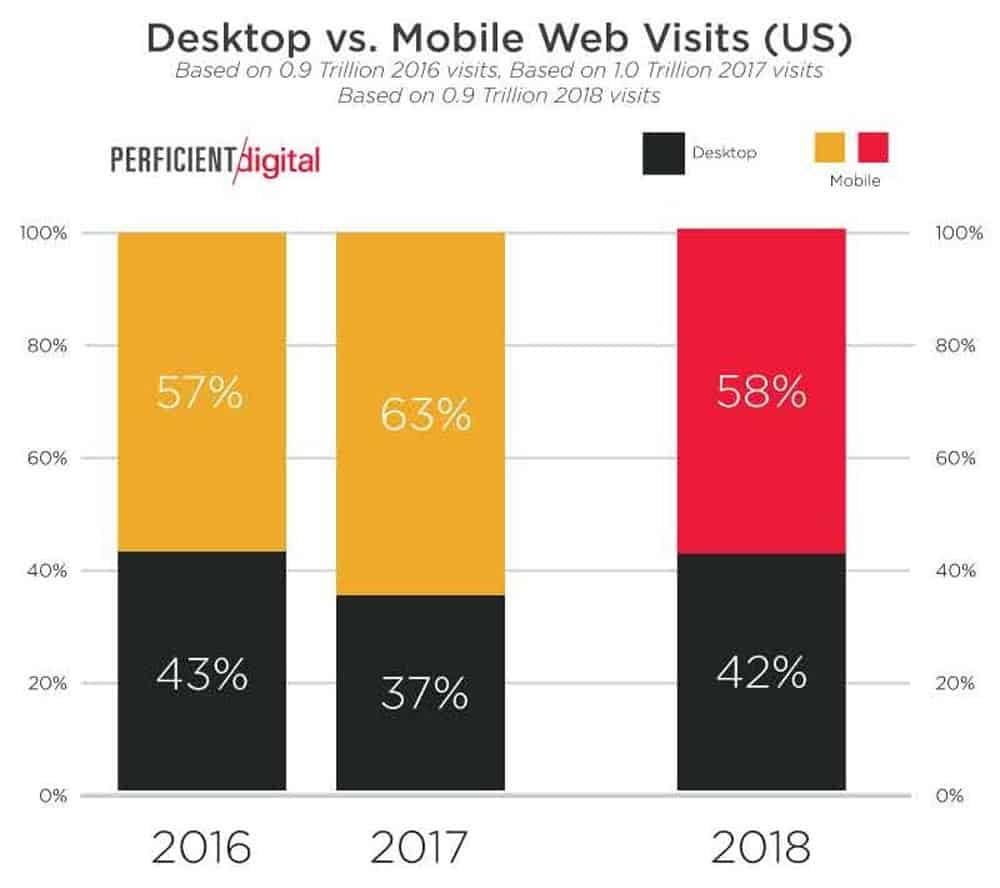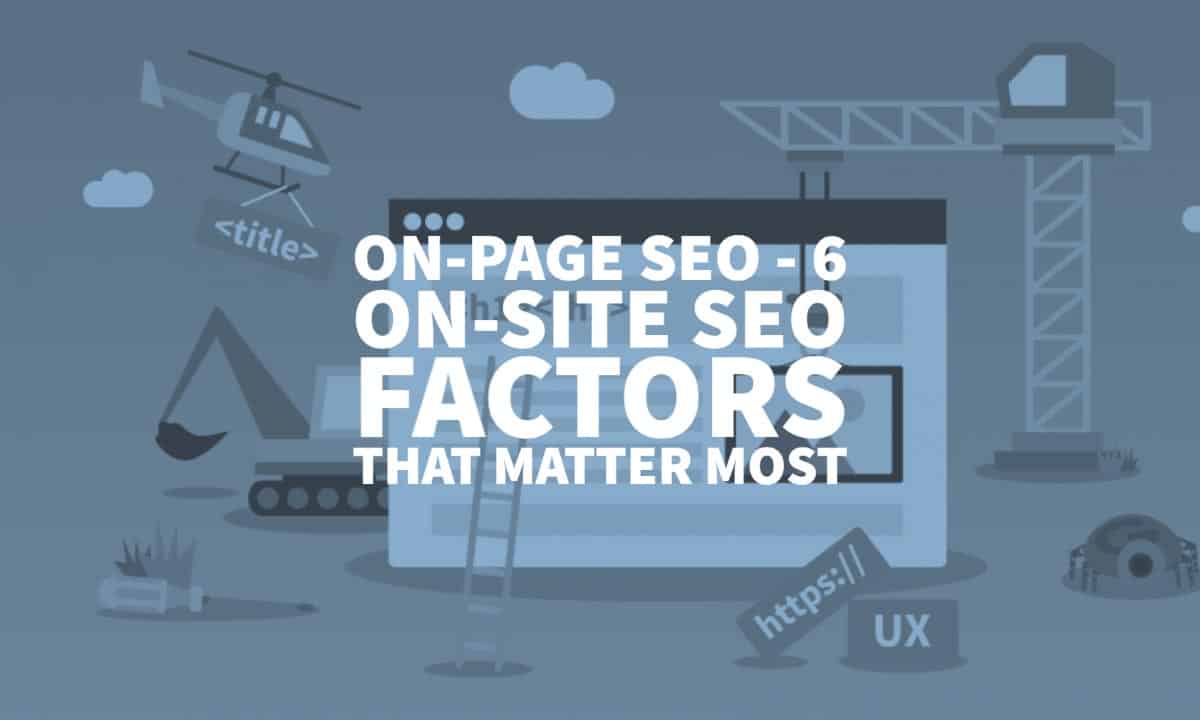
19 May On-Page SEO – 6 On-Site SEO Factors That Matter Most
On-Page SEO – 6 On-Site SEO Factors That Matter Most
SEO activities can be divided into two main categories: on-page and off-page optimisations.
Off-page optimisations are arguably simpler to explain since it mainly involves just one thing: getting more high-quality backlinks.
On-page optimisations, however, are much more complex and can involve many different aspects of your website. This can include technical issues like improving your site’s loading speed to optimising your content’s structure.
There are also over 200 ranking factors that can affect your ranking on Google’s SERP; a lot of them are related to on-site SEO.
So, what are the most important on-site SEO factors to focus on if we have limited time and budget? Which should we prioritise?
In this guide, we will discuss six of the most on-site SEO factors to focus on in 2020. Yet, let us begin by talking a little deeper about the concept of on-page SEO.
What Is On-Page SEO?

On-site SEO or on-page SEO is the practice of optimising different elements on a website’s content.
It’s important to note that on-site SEO is not only about optimising your site for Google, but instead, there are three key objectives of on-site SEO:
- Ensuring your website can be properly crawled and indexed by Google, and so Google can adequately recognise all different elements on your website.
- Optimising the content of your website so your audience can properly consume it. The content should be as valuable and relevant as possible for human readers.
- Optimising the user experience aspect of your website to maximise dwell time and lower bounce rate.
So, to cover these objectives, many different areas must be optimised in on-site SEO from optimising title tags, content (including keyword optimisations), internal linking structure, URL optimisations and so on.
1 – Content Quality

According to SEO expert Mike Khorev, the quality of your content is by a long mile, the most important on-site factor in B2B SEO, period.
No amount of SEO optimisations can help the performance of bad content, and instead, we should think of SEO as merely an amplification of an already-performing content.
So, the question is, what is considered a high-quality content? The short answer is that the content should be valuable and relevant for your target audience. This, however, can include several other factors:
- Originality
All content that is on your website should be original and not copied and pasted from other sites.
The originality here doesn’t only refer to the texts written on the content, but also the idea within.
If it’s a unique and original idea, it’s a big plus and Google can recognise it.
- Exclusivity
Even if it’s your own unique and original content, it will produce less value on your website if it’s already published on other websites.
It’s not saying, however, that you should avoid publishing your content on other sites, as content syndication and other content leveraging efforts can have their benefits for SEO.
It’s just you’d need to make sure to specify canonical tag correctly.
- Information and Context
Don’t just publish for the sake of publication. Make sure the content is going to add value to your website and readers.
Make sure it’s also unbiased and well-researched, and long-form content tends to rank better than short articles.
2 – Website Accessibility, Security and Reliability
As we’ve established, one of the objectives of on-site SEO is so that Google can properly crawl, index, and recognise all the different elements of your website.
It’s imperative to ensure Google can easily reach and crawl the URL, and you’d want to “help” the Google bots as much as possible by:
- Making sure your site is built correctly. If your site is WordPress based with an optimised Theme or if your site is using a well-coded website builder like Wix, Weebly or Squarespace, then they should do the job for you.
- An optimised robot.txt file. It should tell Google accurately about where it can and can’t crawl.
- An optimised XML sitemap. You can use this sitemap generator to help you, or if your site is on WordPress, you can use various plugins like Yoast SEO to generate your sitemap.
Also, since 2018, Google now label sites without HTTPS encryption as not secure, and so won’t recommend these sites on the SERPs. So, make sure to enable SSL security on your website.
Make sure also to optimise your URL.
An SEO-friendly URL is short and descriptive (easily understood by human readers), and includes your focus keyword.
It should be less than 255 characters in length, and you should use hyphens to separate different parts. Remember that the URL structure of your site should mimic the website’s actual structure.
3 – Website’s Speed

It’s no secret that page speed has been one of the most important ranking factors in recent years.
Remember that Google’s objective is to improve the user’s experience of the whole web.
If a website is slow to load, many people will bounce from the site due to bad user experience.
You can use Google’s PageSpeed Insights to assess your site’s current performance, and although speeding up your website can be a very complex subject to discuss, in general, here are some critical areas you can work on:
- General optimisations: from enabling caching on your website (or using a caching plugin), using a Content Distribution Network (CDN) to make sure that the content is delivered from a location as close as possible to your website visitor. Also, optimise the images and videos on your site.
- Use HTTP2: in recent years there are various upgrades to a website’s infrastructure to speed up your site’s performance, including HTTP2.
- PHP7: especially if your site is WordPress-based, you should use PHP7.
- Rendering blocks: PagesSpeed Insights will show you whether your CSS or JavaScript is blocking your page from rendering quickly. Various tools can help you fix these issues.
4 – Mobile-Friendliness

Since 2016 or so, Google has publicly declared that they are prioritising mobile-friendly sites.
Meaning, Google now index results from mobile-friendly sites first rather than sites that are only focused on desktop devices.
Then, in July 2018, Google launched a search engine algorithm update that is focused on mobile page speed.
That is, if your site doesn’t load fast on mobile devices, it won’t rank and even can be penalised.
First, use Google’s mobile-friendly testing tool to check your site’s current state against mobile-friendliness. Then, you should assess the following areas:
- Make sure to use a mobile-friendly or mobile-responsive template or theme, and test its performance on as many devices as possible.
- Use large enough fonts for easy readability on smaller screens.
- Assess your site’s accessibility, including how easy it is to tap menus and fill the fields of a form
- Very important, make sure the content on your site is not hidden by ads, which is a prevalent issue when viewing your site on a mobile device.
5 – Domain’s Prominence
Prominence here refers to several different factors from the age of your domain, the relevancy of the URL, overall authority, and more.
A study from Ahrefs has suggested that very few sites less than a year-old have a top ten Google search ranking, and nearly 60% of the websites that rank on the top 10 spots are three years old or more.
There’s nothing much you can do about this, except to maintain consistency as you wait for your domain to “age”.
Also, when it comes to search engine ranking, your URL can help. It’s okay to use exact-match domains as long as the content of the page is in-depth and related enough.
Other research shows that exact-match domains that are deemed to be valuable, relevant, and high-quality.
You can use Moz’s page authority and domain authority scores to check the prominence of your page, which necessarily will tell you how likely your page is going to rank in the SERP.
6 – User experience

Since 2016 or so with the introduction of the Google RankBrain, Google has used A.I. technology to understand better the context of the web pages and how users interact with the page.
So, now metrics related to the user experience (UX) are ranking factors, they are:
- Click-through rate (CTR): that is, the percentage of users who click your site on the SERP result to visit your website. If, for example, your website is ranked on top but doesn’t get too many clicks, your position can be demoted.
- Bounce rate: the number of people who immediately exits your site, which means your site didn’t give them what they wanted.
- Dwell time: how long the visitor stays on your site after they have visited your website.
In general, you’d want to keep people for as long as possible on your page.
If people visit your site but don’t like it and bounce away, and Google will notice this and perceive your website as an irrelevant result.
On the other hand, if many people click to visit your site and then stick around for a while, that tells Google that your content is relevant, and you might get promoted.
Conclusion
That’s it! You’ve come to the end of this article, and you’ve learned the six most important on-site SEO factors.
As established, the quality and relevance of your content are the most critical factors in ensuring your ranking. If you can consistently meet the three objectives:
- Ensuring your website can be properly crawled and indexed by Google.
- Optimising the content to ensure relevance and value
- Optimising the user experience aspect of your website
Then your site can climb the SERP ranking, slowly but surely.
Author Bio: Mike Khorev is an SEO expert and digital marketing consultant who helps small and mid-size businesses generate more leads, sales and grow revenue online. He offers expert advice on marketing your company the right way through performance-based SEO digital marketing, web design, social media, search engine marketing and many other online practices.



